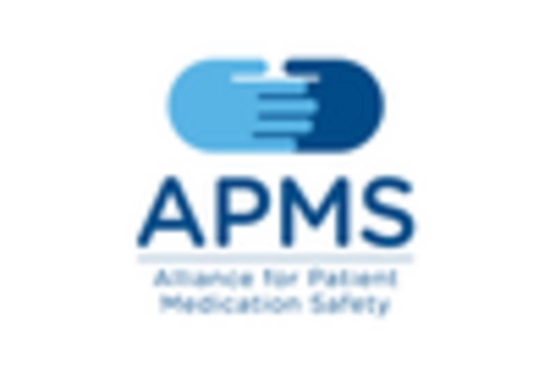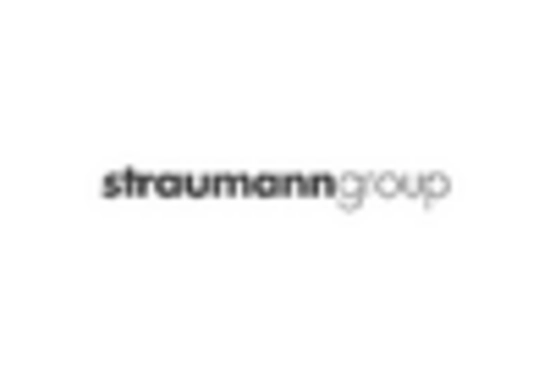Growing Aging Population
The demographic shift towards an aging population is a crucial driver for the Dental Regeneration Market. As individuals age, they often experience a decline in oral health, leading to an increased need for dental treatments that focus on regeneration. The World Health Organization indicates that the proportion of the population aged 60 years and older is expected to double from 12% to 22% between 2015 and 2050. This trend suggests a rising demand for dental regenerative solutions, as older adults are more susceptible to conditions such as periodontal disease and tooth loss. Consequently, the Dental Regeneration Market is likely to expand to meet the needs of this demographic, offering innovative solutions that promote oral health and enhance quality of life for aging individuals.
Increased Awareness of Oral Health
There is a growing awareness of the importance of oral health, which is significantly influencing the Dental Regeneration Market. Public health campaigns and educational initiatives are emphasizing the link between oral health and overall well-being. As individuals become more informed about the consequences of poor oral hygiene, they are increasingly seeking preventive and regenerative dental treatments. Market data suggests that the demand for dental regeneration products is expected to rise, with consumers prioritizing treatments that not only restore function but also enhance aesthetics. This heightened awareness is likely to drive innovation within the Dental Regeneration Market, as companies strive to develop products that align with consumer expectations for quality and effectiveness.
Rising Incidence of Dental Diseases
The prevalence of dental diseases is a significant factor propelling the Dental Regeneration Market. Conditions such as caries, periodontal disease, and tooth loss are becoming increasingly common, necessitating effective regenerative solutions. According to the American Dental Association, nearly 50% of adults aged 30 and older exhibit some form of periodontal disease. This alarming statistic underscores the urgent need for advanced dental regeneration techniques that can address these issues. As the incidence of dental diseases continues to rise, the Dental Regeneration Market is poised for growth, with an emphasis on developing innovative treatments that can effectively restore dental health and function.
Investment in Research and Development
Investment in research and development is a pivotal driver for the Dental Regeneration Market. Companies are allocating substantial resources to explore new materials and techniques that enhance regenerative capabilities. This focus on R&D is crucial, as it leads to the discovery of novel biocompatible materials and advanced technologies that can improve treatment outcomes. Recent reports indicate that the dental regenerative materials market is expected to reach USD 5 billion by 2026, reflecting the industry's commitment to innovation. As research progresses, the Dental Regeneration Market is likely to benefit from breakthroughs that not only enhance the efficacy of treatments but also expand the range of applications for dental regeneration.
Technological Innovations in Dental Regeneration
The Dental Regeneration Market is experiencing a surge in technological innovations that enhance treatment outcomes. Advanced techniques such as 3D printing and regenerative medicine are revolutionizing the way dental procedures are performed. For instance, the integration of stem cell therapy and tissue engineering is paving the way for more effective regeneration of dental tissues. According to recent data, the market for dental regenerative products is projected to grow at a compound annual growth rate of approximately 12% over the next five years. This growth is driven by the increasing adoption of these technologies by dental professionals, who seek to provide patients with more effective and less invasive treatment options. As a result, the Dental Regeneration Market is likely to witness a significant transformation, improving patient satisfaction and clinical outcomes.


















Leave a Comment